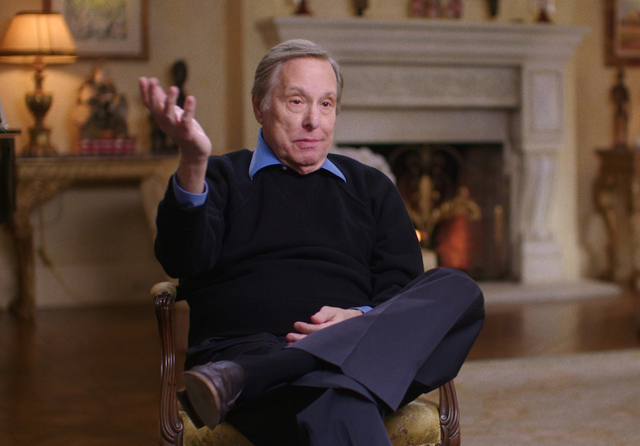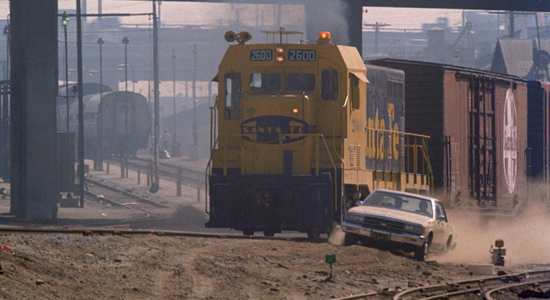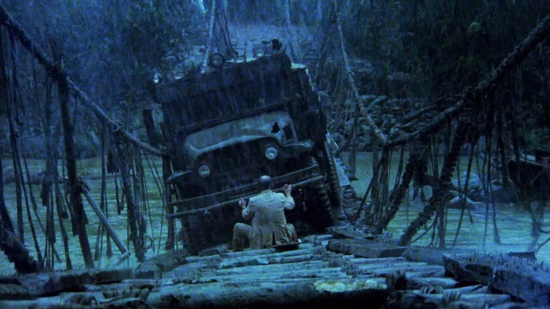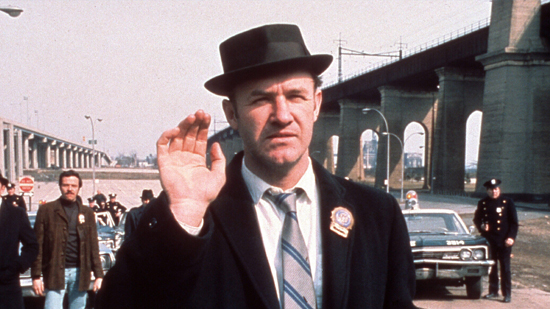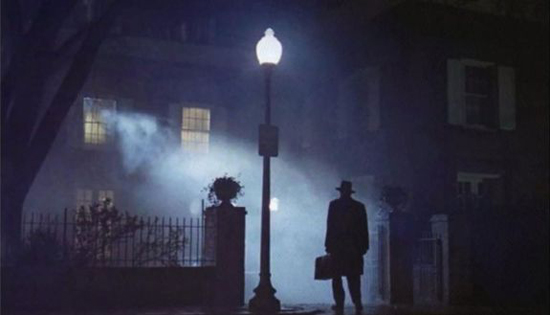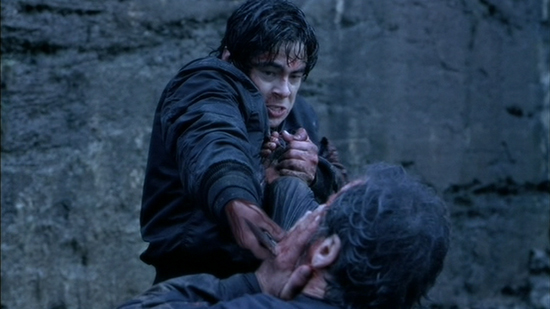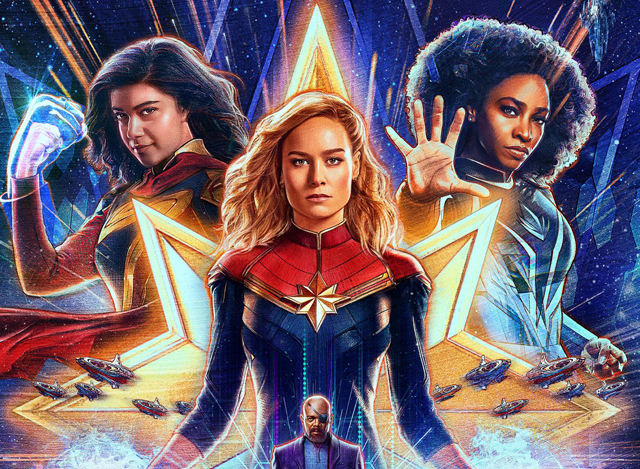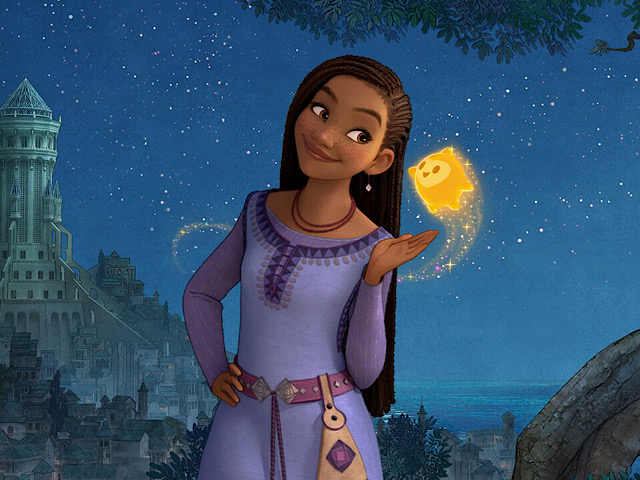
This is what 100 years of artistry has led to. The Walt Disney Company is a multi-faceted machine that has many branches into different aspects of our pop culture; from movies to theme parks and so much more. But the core of Disney still remains their now century old animation studio. Started out of a back room of a law office, Disney quickly grew into the juggernaut of the still maturing animation medium of filmmaking. They were the industry leaders and the trend setters, and to this day, Disney Animation is still regarded as the gold standard of the art form. Though the studio has been responsible for many beloved animated projects, what most fans hold the most dear is what is called the Disney Feature Canon. The canon of animated features dates back to the groundbreaking first, Snow White and the Seven Dwarves (1937), which was at the time thought to be an impossible achievement. But, the success of Snow White proved that animation could indeed hold peoples’ attention for the length of a full feature film, and Walt Disney and his team wasted no time in repeating that achievement. Before Snow White was even out of theaters, the Disney animators were already at work on two more projects, Pinocchio (1940) and Fantasia (1940), with a couple more also in the early pipeline. Disney has continued to build upon this canon of films, through both good times and bad. The tools over time have changed as well, with computers replacing the traditional hand drawn method. With the release of last year’s Strange World (2022), the total number of Animated Features in the Disney canon reached 61. But, there was a milestone coming up in 2023 as the Animation Studio was about to hit it’s century mark. And with a huge milestone like 100 years, the Disney animation team needed to figure out a special way to mark the occasion.
Sadly, the 100th anniversary has fallen on a hard time for the Disney company. The studio has seen a lot of their projects over the last year fall short of expectations, which has led to a significant priority shift. At the same time, the industry itself is not what it used to be, as the streaming market has put every previous metric of success into flux. The last couple of years has been a bit of a perfect storm of confusion and bad fortune to fall upon every aspect of Hollywood, but especially at Disney. The pandemic caused significant disruption across the spectrum of the business, with Disney seeing not just a hit to their box office performance with theater closures, but also lengthy closures of their theme parks as well. Once the world began to re-open, the problems didn’t go away. Budgets that ballooned over the course of filming during a pandemic made it harder for them to re-coup at the box office once theaters were re-opened, and a significant shift towards streaming viewership also made it hard for studios to generate excitement for theatrical releases. This was particularly evident with Disney, as their corporate mandate went aggressively into the streaming market. Though all animation at Disney was affected, the brunt of this shift was particularly felt at Disney’s sister studio in Emeryville, California; Pixar Animation. Their movies for over 2 years weren’t even granted a theatrical exhibition, including Soul (2020), Luca (2021) and Turning Red (2022). Meanwhile, the main animation studio still was able to get theatrical releases, though they didn’t fare much better in the post-pandemic box office. Since Covid, no Disney Animation film has crossed the $100 million mark at the box office, which is troubling given that before the outbreak in 2019, Frozen II (2019) managed to gross over a billion worldwide. With the 100th anniversary looming, and pressure mounting to deliver a movie that could reverse the sagging fortunes of Disney Animation, the studio heads decided the right thing to do was to return to basics with their newest animated film called Wish (2023); a traditional fairy tale adventure musical with all the hallmarks of what made Disney the dream machine that it has become over the last 100 years. The only question is did their wish come true or is a dream too far to reach?
The story of Wish takes place in the mythical kingdom known as Rosas. The island kingdom has become a place of refuge where residents have come from all over the world to have their greatest dreams come true. They all come to Rosas because the kingdom is ruled over by a sorcerer turned monarch named King Magnifico (Chris Pine) who has the power to grant wishes, though on a limited basis. Everyone desires to serve the king and his Queen Amaya (Angelique Cabral) fatihfully in order to have their wish selected and fulfilled. Chief among them is an eager young woman named Asha (Ariana DeBose), who has been granted an interview to become Magnifico’s apprentice. Asha has no wish to give herself, but instead she wants to fulfill the wish of her 100 year old grandfather Sabino (Victor Garber). Upon meeting Magnifico in his palace, she learns that the King is not really granting wishes, but rather hoarding them, picking and choosing a select few to grant each year. Asha challenges his assertion of what to do with the wishes and it causes her to lose her candidacy for the job. Distraught, Asha looks for hope in her own wishes, and seeks guidance in the stars above. To her surprise, a star comes down from the sky towards her. The Star has a mind of it’s own and begins to spread it’s magic around the forest where Asha has found herself in. To her surprise, all the creatures touched by the star dust begin to speak, including her pet goat Valentino (Alan Tudyk). The arrival of the star alarms King Magnifico, who believes it to be a threat to his hold on power over the people of Rosas. He declares Asha to be a traitor for sheltering the Star, and he promises a wish granted to anyone who rats her out. Asha seeks the help of her seven friends in the palace, including Dahlia (Jennifer Kumiyama), Gabo (Harvey Guillen), Hal (Niko Vargas), Simon (Evan Peters), Safi (Ramy Youssef), Dario (Jon Rudnitsky), and Bazeema (Della Saba) to assist her in getting Star to the wishes so he can grant them all. But, they’ll have to act fast once Magnifico has started to delve deeper into his dark, forbidden magic.
As described before, the movie Wish has a lot of heavy lifting to do. It’s got to help restore Disney’s waning success at the box office while at the same time mark the 100th anniversary of the studio as a whole. Either is no easy task, but on paper this movie does have the ingredients to make a valiant attempt at the job. It’s got a charismatic princess type heroine at the heart of its story, vibrant animation, ambitious musical numbers, an unambiguous villainous threat, and plenty of funny talking animals. It pretty much is every Disney movie you can think of rolled into one. Unfortunately, the pieces don’t all come together like they should. Disney’s Wish sadly feels more like a parody of a Disney movie rather than the fleshed out stand alone feature that it aspires to be. As a life long Disney fan, this movie is especially disheartening in its disappointment because of all those factors that weigh on its shoulder that I described earlier. It’s the movie that was “100 years in the making” according to the marketing for this film, and this is what we ended up with? The characters are all shallow imitations of characters we’ve already seen in other, better Disney movies; quite literally in seven specific cases. The songs are bland and will in no way climb the charts the same way that classics from “When You Wish Upon a Star” to “We Don’t Talk About Bruno” have done in the past. Even the animation feels woefully generic, especially in contrast to more ambitious films in the last year like Dreamworks’ Puss in Boots: The Last Wish (2022) and Spider-Man: Across the Spiderverse (2023). Now, to be fair, I have seen worse from Disney; the abysmal Frozen II comes to mind, as well as the basement dweller Chicken Little (2005). But the way that Wish squanders all of it’s opportunities just makes the end result feel so frustrating and pretty much a punctuation mark on the lackluster year that Disney gave us to mark their 100 years. Of course, the studio is aware of it’s shortcomings right now and are taking steps to right the ship, but sadly the occasion of a one hundred year anniversary is one they should have gone the extra length to make particularly special and it’s ultimately a wasted effort.
The first and foremost problem with Wish is the story, or more appropriately the lack of one. Again, the ingredients are there for something special, but it just feels like the filmmakers want to speed run us through them. This was really apparent to me at a point watching the film where I thought the movie was actually beginning to find some dramatic footing but then I realized that it was already heading into its climax. I was shocked to to see that almost nothing of substance was happening in the lead up to the climax; it’s just a collection of cat and mouse chases and then on to the final battle. The movie is 95 minutes long, a full 11 minutes longer than Beauty and the Beast (1991) for example at it’s 84 minute length, and yet in the Beauty and the Beast’s case those 84 minutes developed a richly textured love story that grows organically without feeling rushed and even finds time for seven original songs. Wish never gives the story enough time to breath and allow us to get to know the characters and the world they inhabit. One obvious problem is that there are simply too many characters. Not only do you have Asha and King Magnifico, the two characters who we should be learning the most about in the story, but their time on screen has to be shared with Asha’s seven friends, her pet goat, as well as Asha’s grandfather and mother, and also the Queen as well. The movie has a big problem with balancing all of these characters into the story as a whole, and as a result character development suffers. This is especially a problem when it comes to Asha, as she should stand out as a more interesting heroine. We don’t understand her motivations other than standing up to King Magnifico. Her wants and desires are ultimately surface level and she never exhibits any aspirational qualities. More useful time used to develop her as a character could have helped, but I guess the filmmakers were desperate to have a song and dance scene with chickens.
Not every aspect of the film fails though. If there is a silver lining to the film, it would be the voice cast. While her character development suffers greatly in the movie, Asha still is able to be endearing enough thanks to the soulful performance of Oscar-winner Ariana DeBose in the part. You can tell she is trying her hardest in the performance to make Asha an appealing character, and it does translate in the film. There’s a wonderful earnestness in her vocal performance that helps to cut through the lackluster writing. You can probably tell from Ariana’s performance that voicing a Disney heroine was a dream come true for her, so she definitely seized her moment and made the most of it, especially in the songs that she performs. Of all the songs in the movie, the one that comes closest to working is the big ballad “This Wish;” your standard Disney “I Want” song. The song itself is no “Part of Your World,” by a long shot, but Ariana DeBose still crushes it with her angelic, Broadway trained voice. The other noteworthy vocal performance is from Chris Pine, playing the villainous Magnifico. You can definitely see that Pine understood the assignment and goes full maniacal Disney villain with his performance. It’s a little cartoonishly over the top at times, but given the blandness of most of the rest of the movie, his performance is the one thing about the movie that stands out, and as a result he ends up stealing every scene he’s in. Alan Tudyk has over the years become Disney Animation’s good luck charm, having had a role in every film from the studio since Wreck-It Ralph (2012); much like the role John Ratzenberger has played over at Pixar Animation. Tudyk’s performance as Valentino the Goat is fine, though not as funny as his past roles, and he’s mainly here just to get a chuckle out of the little kids in the audience, which I guess he does a fine job with. The rest of the cast don’t stand out much at all, but they aren’t terrible either. Again, the cast is let down by a poorly written story, and it’s only through the efforts of a talented vocal cast that they movie escapes becoming a complete disaster.
There’s a lot to say about the animation as well. Wish continues the recent trend of textured animation being applied to 3D computer generated models. It’s basically CGI trying to emulate the look and feel of something that was hand drawn. In some cases, we’ve seen a brilliant utilization of this animation style, like with Sony Animation’s Spiderverse movies. It’s a trend that is definitely catching on, and Wish is Disney’s first attempt at adopting this style. While the Spiderverse movies emulated the look of comic books for its art style, Disney delved into its own history to find the right kind of texture to build their palette around. The art style of Wish is a mixture of the kind watercolor richness of Snow White and the Seven Dwarves, but with the angular composition and high detail of Sleeping Beauty (1959). While the end result does look pleasing to the eye, it also makes the movie feel derivative. The movie tries too hard to look like a Disney movie, and as a result it lacks its own iconic elements to help it stand out. All the classic Disney animated features stood out from the pack because they didn’t just copy what had been done before. That’s why each kingdom is unique in the Disney canon, and why they work with so many diverse cultural influences. When Disney movies are your cultural inspiration, it just feels like animation cannibalizing itself. Also, Disney doesn’t fully commit to the textured animation either. The distinctiveness of the Spiderverse movies is attributable to the way the characters are animated as well, with the animators using choppier frame rates for the characters to make their movements seem more dynamic and hand drawn. The characters in Wish have the skin and clothing texture of that classic Disney hand drawn style, but they still move with the same fluidity of a computer animated character, making the characters feel a little too plastic. Perhaps it may have worked better if, you know, Disney actually tried to make this movie the traditional hand drawn way like they used to. I feel like Disney has been spooked ever since the post-Renaissance decline and the fact that the big hand drawn come back in the late 2000’s, led by The Princess and the Frog (2009) never lit up the box office the way they would’ve liked. Since then, it’s been all CGI for better and worse. I know it’s out of their comfort zone now, but I feel Wish would’ve been better served as a return to the traditional hand drawn art style that built the company in the first place, rather than this compromised half-and-half approach that ultimately doesn’t work the way it’s supposed to.
I don’t think that Wish is the end of Disney Animation as we know it as some more doomerist critics have deemed it to be. It definitely feels like a good idea that unfortunately was squandered by a lot of bad creative decision. How far up the problems go at Disney Animation I am not sure, but the movie definitely feels like it was the victim of corporate interference as the studio was desperate to have a product out by the end of the year to commemorate an anniversary. It doesn’t surprise me at all that this was a late Chapek era project, as it has all the hallmarks of a movie made by a committee rather than artists. The screenplay was co-written by Disney Animation head Jennifer Lee, but her success in the pass with working on classics like Frozen (2013) and more recently Encanto (2021) should say that she’s got enough good creative good sense to see these features through. Considering that this movie was produced during the turbulent transition from Bob Chapek back to Bob Iger tells me that the film needed more time to fully cook, but it unfortunately had to still hold it’s anniversary release date which meant not giving it enough time to work out all it’s issues. I just hope that Bob Iger and the top Disney brass takes the disappointment of this movie as a sign that they need to invest less in their animation output. If anything, this movie shows that the Animation Department at Disney has been neglected these last couple years, and should really be focused on more. You can still tell that the animators poured their heart and soul into their work. It’s just that all that great animation ultimately doesn’t stand out with a story that is insultingly flimsy. Sadly, this is what we ended up with as a touchstone to mark Disney’s 100th anniversary. We as fans wanted a love letter and all we got was a greeting card. But, if you are looking for a more rewarding experience to mark Disney’s 100th, check out the short Once Upon a Studio (2023), playing right now on Disney+. The short is a wonderful celebration of the studio’s history, as all of the animated characters from every film, from Mickey Mouse to Asha, assembles outside the Burbank Studio office to take the ultimate family photo. It’s a wonderful short that both works as a well crafted piece of animation as well as the love letter to Walt Disney’s legacy that this 100th anniversary deserves. As for Wish, it sadly will be looked at as a lost opportunity. Younger audiences unaware of the 100 year legacy may not care as much and will probably enjoy the movie a lot more. But for adult fans who wanted something more than this, you’re better off wishing for something else.
Rating: 6.5/10
